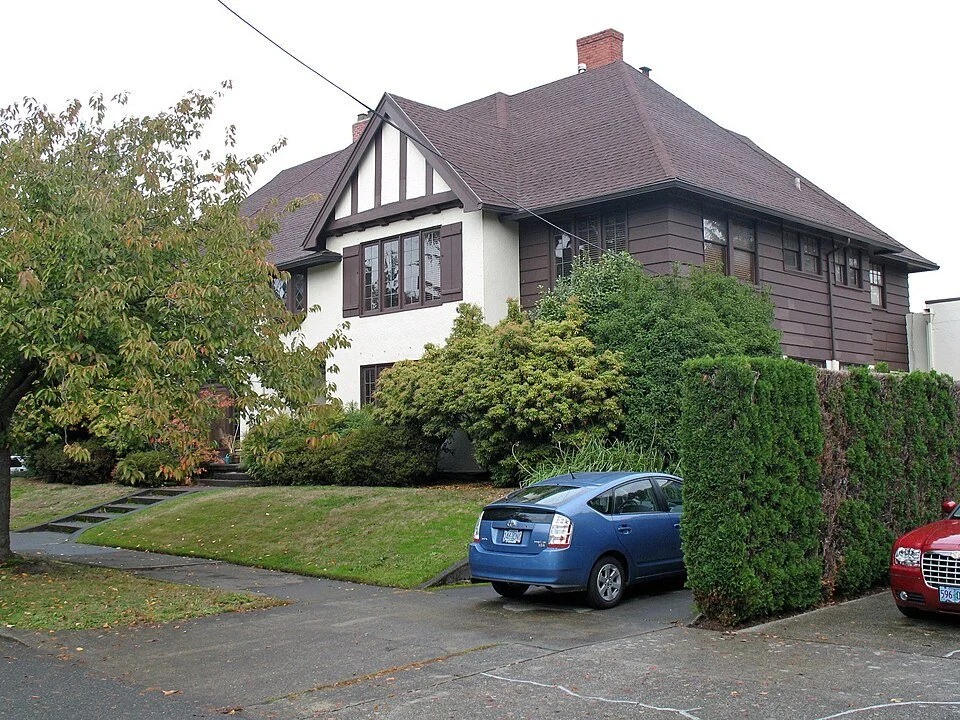The Disappearance of the Classic Fourplex in Portland
ZONING LAWS QUIETLY ERASED PORTLAND’S MOST PRACTICAL HOUSING—AND WHY WE’RE FINALLY WELCOMING IT BACK
Have You Noticed?
If you’ve walked through older Portland neighborhoods—Buckman, Irvington, Brooklyn—you’ve likely seen them: boxy, two-story fourplexes with symmetrical doorways and tidy landscaping. Some are brick, others stucco. Most were built in the 1910s through the 1930s. But here’s what’s strange: for decades, no new ones were built. In fact, you could live in one… but not build another.
So what happened? Why did Portland stop making the kind of housing that fits so well in our neighborhoods?
Let’s rewind to a turning point most Portlanders have never heard about.
The 1924 Zoning Code: A Gentle City's Not-So-Gentle Rezone
The 1924 zoning map that reshaped Portland’s residential future—based on who was already living there.
Yellow areas indicate where multifamily housing was banned.
Portland’s first comprehensive zoning code was passed in 1924, and it changed everything.
This code didn’t just separate industrial from residential—it banned attached homes like duplexes, triplexes, and fourplexes from large swaths of residential neighborhoods. Not coincidentally, those were Portland’s most affluent and least diverse areas: Laurelhurst, Eastmoreland, Irvington, Alameda.
Driven by exclusionary motives—both classist and, at times, explicitly racist—this rezone locked in single-dwelling-only zoning as a tool for preserving "neighborhood character." And while the language was technical, the intent was cultural: protect wealthy enclaves from density, renters, and working-class families.
Then Came 1959: The Fourplex Ban Becomes Citywide
By 1959, Portland doubled down.
That year’s sweeping zoning overhaul expanded single-family zoning across almost all of inner Portland. This made it illegal to build any middle housing (duplexes, triplexes, fourplexes) in almost every residential neighborhood.
Even where older fourplexes already existed, they became “nonconforming.” You couldn’t rebuild them if they were torn down. In effect, the city outlawed the very housing that had helped it grow in the early 20th century.
This decision didn’t just limit density—it narrowed the spectrum of who could afford to live in Portland. And because those restrictions aligned with neighborhoods that already had wealth and political influence, the divide deepened.
Area’s where after 1959 multifamily housing was banned
The Wealth Divide—Carved in Code
Zoning isn’t just about land use. It’s about access and exclusion.
When fourplexes were legal, families could rent or buy a smaller portion of a shared lot and still enjoy neighborhood amenities. When they were banned, the minimum price of entry skyrocketed. You now had to afford an entire detached house—plus the land beneath it.
By creating scarcity of modest-sized homes, Portland's zoning system protected wealth and drove up housing costs. A hundred years later, that same 1924 zoning footprint still maps closely to Portland’s wealthiest census tracts.
Blue and dark blue areas indicate highest income areas as of 2019 with the yellow overlay of the 1924 multifamily ban
Reversing the Damage: The Residential Infill Project
After decades of growing awareness—and a worsening housing shortage—Portland finally acted.
In 2020, the Residential Infill Project (RIP) was passed. For the first time in over 60 years, it allowed fourplexes to be built on nearly all lots previously zoned for single-family use. Later amendments even allowed sixplexes under affordability guidelines.
In a quiet but historic shift, the city acknowledged: this housing should never have been banned.
The Takeaway: A City Reclaiming Its Middle Ground
The classic fourplex isn’t a relic—it’s a reminder.
A reminder that neighborhood-compatible housing doesn’t have to be a single-family house on a large lot. That a diverse range of residents, incomes, and life stages deserve a place in Portland’s neighborhoods. That good design and smart policy can align.
The disappearance of the fourplex was never inevitable—it was a policy choice. So is bringing it back.










